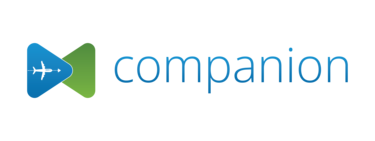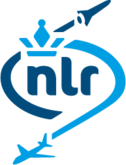COMPANION
COMmon Platform and Advanced INstrumentation ReadIness for ultra efficient propulsion demonstratiON
Project description
COMPANION stands at the forefront of aviation innovation, driving forward the future of efficient flight propulsion.
By transforming an Airbus A380 into a cutting-edge test platform, COMPANION pioneers the integration of advanced propulsion systems, setting new standards for aviation technology. With a collaborative approach and a commitment to sustainability, COMPANION is reshaping the landscape of flight, ushering in a new era of greener, more efficient air travel.

Key Challenges of the COMPANION Project
Challenges
The COMPANION project will face several key challenges pursuing its objective to prepare a Flight Test Demonstration platform to support future technology maturation up to TRL6 of the next generation propulsion systems.
Firstly, there's the demand to meet Clean Aviation Phase 2 expectations, necessitating the operational readiness of its Flight Test Demonstration platform and of the related Flight Test Instrumentation by the end of 2026. This timeline underscores the need for precise planning and execution to ensure timely completion.
Secondly, adapting an Airbus A380 aircraft to accommodate innovative propulsion systems presents formidable engineering challenges. Of particular importance are the modification of the airframe to integrate the Open Rotor test engine or the modification of systems to integrate the hybrid electric Ultra High Bypass Turbofan. Addressing these challenges requires a combination of technical expertise, creative problem-solving, and rigorous testing to ensure safe and efficient integration.
Lastly, navigating the flight clearance process is a complex procedural challenge that demands meticulous attention to detail. Ensuring regulatory compliance and safety for upcoming flight test campaigns requires thorough documentation, rigorous testing, and coordination with aviation authorities.
Overcoming these challenges is crucial for the successful realisation of the COMPANION project's objectives.
Strategies applied by COMPANION
Solutions
To tackle its challenges, the COMPANION project will implement strategic solutions aimed at ensuring timely completion, efficient engineering modifications, and seamless regulatory compliance.
Firstly, timeline management is employed to prioritise tasks and allocate resources effectively, ensuring that the Flight Test Demonstration platform becomes operational by the designated deadline. This strategic approach involves careful planning, regular progress monitoring, and proactive problem-solving to mitigate potential delays.
Secondly, engineers employ innovative solutions to modify the Airbus A380 aircraft, making it compatible with advanced propulsion systems.
Lastly, the flight clearance process will be initiated and will benefit from EASA experts' support.
Advantages of COMPANION Innovations
Benefits
COMPANION is at the forefront of technological progress in aviation. Its Flight Test Demonstration platform is essential for testing next-generation propulsion systems, which are crucial for developing more efficient aircraft designs.
Enhanced Data Collection
COMPANION will significantly improve data collection to evaluate engine performance under various operational conditions. This data is vital for refining propulsion systems and optimising aircraft performance, contributing to the continuous advancement of aviation technology.
Enabling Technologies and Their Interrelation with Clean Aviation SRIA Objectives
The Strategic Research and Innovation Agenda (SRIA) outlines two key milestones toward climate-neutral aviation by 2050. By 2030, it aims to introduce low-emission aircraft concepts leveraging sustainable fuels and green operations, with entry into service by 2030-2035, while the 2050 goal focuses on achieving climate-neutral aviation through advanced technologies, sustainable fuels, and hydrogen energy. COMPANION leverages several advanced technologies to achieve its goals, aligning with the Clean Aviation Strategic Research and Innovation Agenda (SRIA):
- Pressure Fluctuation Measurements using Micro-Electro-Mechanical Systems (MEMS)
- Provided by DLR, this technology employs thousands of sensors for detailed inflight acoustic source localisation. Besides the development of the acoustic MEMS measurement system, DLR improves sound source localisation methods for the OpenFan rotor and stator stages as well as for UHBR external noise.
- Airflow Speed Measurement using Particle Image Velocimetry (PIV)
- Also provided by DLR, this technology offers airspeed measurements without disturbing the flow, delivering precise local results.
- LIDAR (Light Detection and Ranging)
- ONERA utilises LIDAR to remotely measure non-volatile Particulate Matter (nvPM) (soot) and engine airflow with very high resolution (up to 1 mm) without the need for sampling
- Sound Analysis in Complex Systems
- Both OpenFan and Ultra-High Bypass Ratio ducted fans raise new and specific challenges regarding the analysis and characterisation of their noise emissions, which are critical for validating design and ensuring compliance with current and future noise regulations. DLR and ONERA are providing their expertise to adapt innovative acoustic methodologies for the localisation and characterisation of acoustic sources for the open-fan and separation of the engine noise from fuselage boundary-layer pseudo noise. DLR’s and ECL’s expertise in near-field noise modal analysis provides innovative methods for ducted sound analysis, considering factors like distorted inflow, C-ducts sections of the bypass and inter-stage sound wave propagation.
By integrating these cutting-edge technologies, COMPANION supports the development of next-generation aviation systems. It enhances our understanding of engine performance, driving ongoing improvements in aircraft efficiency and sustainability.
Funding bodies

The project is supported by the Clean Aviation Joint Undertaking and its members.
Funded by the European Union, under Grant Agreement No 101140627. Views and opinions expressed are however those of the author(s) only and do not necessarily reflect those of the European Union or Clean Aviation Joint Undertaking. Neither the European Union nor Clean Aviation JU can be held responsible for them.







